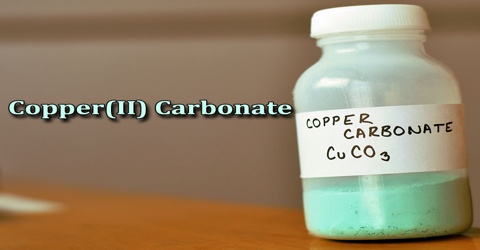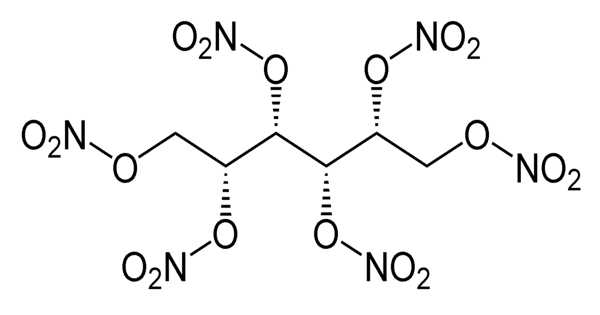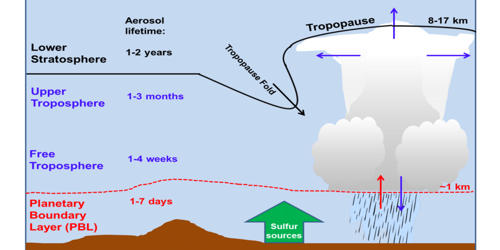Copper(II) Carbonate
Definition
Copper(II) carbonate is a compound, CuCO3, that was used as a sulfide scavenger for water-base muds. It was found to be corrosive due to spontaneous plating of metallic copper onto metal surfaces, causing pitting corrosion; it has largely been replaced by zinc compounds. At ambient temperatures, is an ionic solid (a salt) consisting of copper(II) cations Cu2+ and carbonate anions CO2−3.
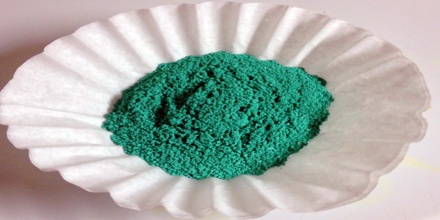
Copper Carbonate has a fairly complex decomposition. The accompanying curve shows the history of weight loss as this material is fired. It is interesting to compare this chart with the one for Copper Hydroxide to see the difference in the amount of weight lost, and when and how fast it occurs.
The terms “copper carbonate”, “copper(II) carbonate”, and “cupric carbonate” almost always refer to a basic copper carbonate or copper(II) carbonate hydroxide, such as Cu2(OH)2CO3, which occurs naturally as the mineral malachite or Cu3(OH)2(CO3)2 (azurite). For this reason, the qualifier neutral may be used instead of “basic” to refer specifically CuCO3.
Elements and Properties of Copper(II) Carbonate
The formula of the carbonate anion: CO32−
The charge of the carbonate anion: 2−
The charge of copper(II): 2+
This means that the copper 2+ ion and the carbonate ion can balance out as a compound.
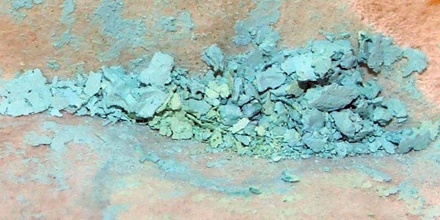
Copper carbonate is bulkier than the oxide form, thus it tends to disperse better to give more even results. It is also more reactive chemically and thus melts better. It produces gases as it decomposes and these can cause pinholes or blisters in glazes. Also the carbonate form contains less copper per gram, therefore colors are less intense than the oxide form. The stability of dry CuCO3 depends critically on the partial pressure of carbon dioxide (pCO2). It is stable for months in dry air, but should actually decompose slowly into CuO and CO2 if pCO2 is less than 0.11 atm.
The solubility product of the true copper(II) carbonate was measured by Reiterer and others as pKso = 11.45 ± 0.10 at 25 °C.
Uses of Copper(II) Carbonate
Copper carbonate has a number of uses across a wide variety of industries and products.
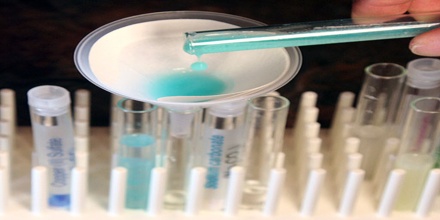
- Aesthetic and Practical: This substance has a number of aesthetic purposes, most notably in jewellery. The carbonate can also be converted into the metal version of copper, which is highly valuable and serves a number of its own applications. This is achieved through a process of pulverization, sizing, conversion and electrolysis.
- Copper Salts: The substance can be converted into copper salts by mixing it with a stronger acid. The resulting salt is complemented with water and carbon dioxide gas. Mixing the carbonate with acetic acid will produce cupric acid, water and carbon dioxide.
- Pigments and Colorants: This substance, when pure, should have a mint green colour. When alkaline components have been added, a tinge of blue will be added to the colour. This is often added to paints, varnishes, pottery glazes and even fireworks to impart some of the colour.
- Miscellaneous: Small amounts of copper carbonates are used in a variety of animal feeds and fertilizers. It also plays a major role in the creation of pesticides and fungicides. It can also be used to control the growth and spread of aquatic weeds. It is also a common ingredient in the ammonia compounds that are used to treat timber.
Copper carbonate is also used as a blue coloring agent in pyrotechnics. Although they are not interchangeable with copper carbonate, other blue coloring agents are copper (II) oxide, copper (II) oxychloride and copper benzoate.
Reference: highettmetal.com, digitalfire.com, socratic.org, wikipedia.
